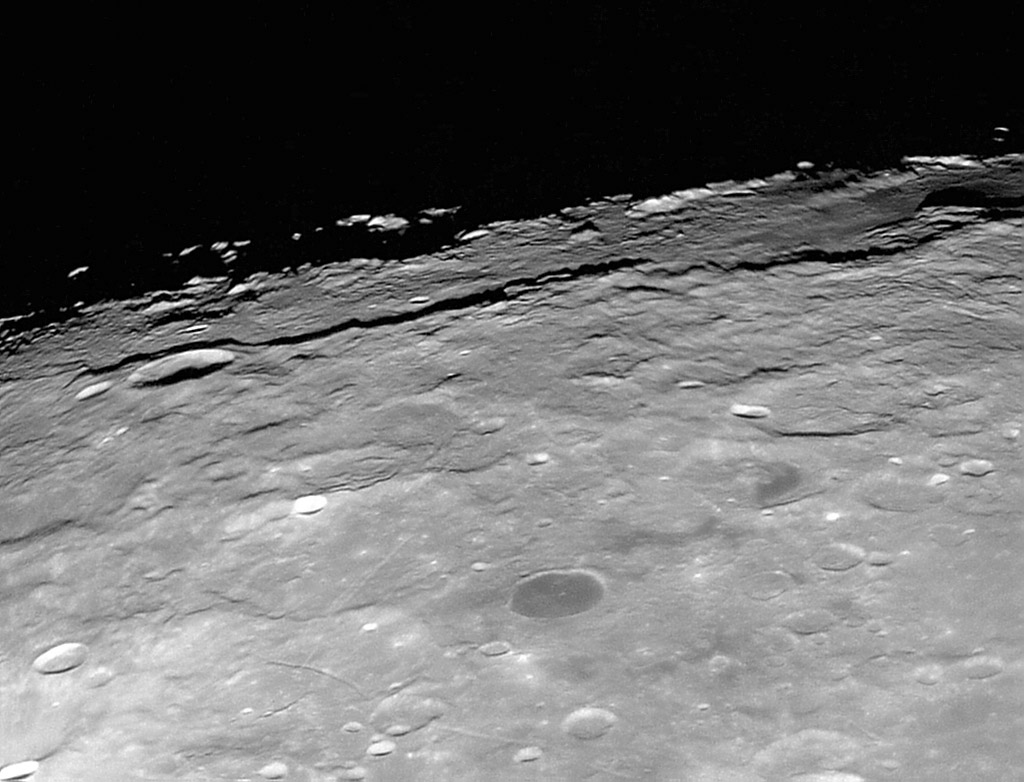May 22, 2014
The Moat in My Eye

image by " rel="nofollow Ricardo Jose Vaz Tolentino, Brazil
By now, after ten years, LPOD has featured images of almost every part of the lunar nearside. We have seen excellent " rel="nofollow images of the eastern side of the Orientale Basin before but this new one from Ricardo shows rugged detail in the moat between the Cordillera and Rook rings of the basin that looks exotic and little known. Perhaps the image looks different because it depicts just one piece of the basin rim at full resolution rather than showing the entire visible rim draped along the limb. The 50 km wide crater Eichstadt, on the Cordillera rim at far left, is a youngish crater that lacks rays so it is probably more than 2 billion years old. Near the middle of the ring where the Cordilleras cast the longest shadows, the QuickMap Path tool gives a drop of 2 km between the rim crest and the moat area below. The Cordillera Mountains used to be considered the rim of the basin, but various lunar scientists have argued that the rough material on the floor of parts of the moat is actually basin ejecta, so that the Rook Mountains - right on the terminator - are the true basin rim. I have always had a hard time with that interpretation because the moat is morphologically very different from the ejecta-damaged surface beyond the Cordillera. Look at this classic Lunar Orbiter " rel="nofollow photo for a wide view of the basin interior and surroundings.
" rel="nofollow Chuck Wood
Technical Details
May, 13, 2014, 22:16:44 LT. Sky-Watcher Collapsible Truss-Tube 16" DOB + Celestron Ultima 2X Barlow + Orion StarShoot Solar System Color Imager Camera III.
Related Links
21st Century Atlas charts 26 & L6.
Ricardo's " rel="nofollow website



